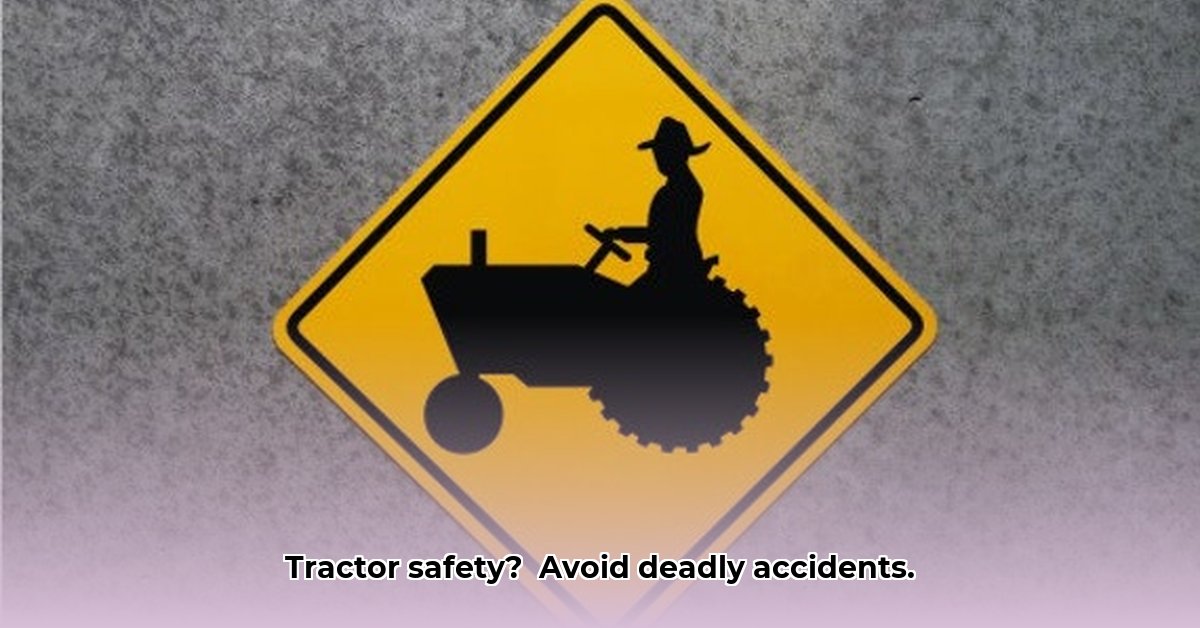
Sharing the road with farm equipment presents significant safety challenges. Collisions between cars and tractors are a serious concern, and surprisingly, a significant factor contributing to these incidents is inadequate signage. For more detailed information on operating farm vehicles on public roads, see this helpful guide: Driving Tractors Safely. This guide provides practical, step-by-step advice on improving farm-to-road safety through effective signage, ultimately saving lives and preventing costly accidents.
Understanding the Problem: Inconsistent Signage, Increased Risk
Many farm crossings lack clear, consistent warning signs. Existing signage is often inconsistent in size, design, and placement. Some signs are small, faded, or confusing, creating uncertainty for drivers and increasing the risk of accidents. This inconsistency necessitates a standardized approach to farm crossing signage that drivers can easily understand regardless of location. The goal is to create a more predictable and safer environment for everyone using the road.
Choosing the Right Sign: Maximizing Visibility and Impact
Selecting the appropriate signage requires careful consideration of several key factors:
Sign Size: Larger signs are far more noticeable, particularly at higher driving speeds. Larger dimensions afford drivers more crucial reaction time. A small, hard-to-see sign is essentially ineffective.
Material Durability: High-quality materials are essential to ensure long-term effectiveness. Durable 80mm thick aluminum signs resist weather damage significantly better than cheaper alternatives, providing long-term cost savings and improved safety. This investment in robust materials ensures prolonged visibility, reducing the need for frequent replacements.
Design Clarity: A clear, concise design is paramount. The design should feature bold lettering, a clear tractor image (or other appropriate farm equipment image), and straightforward wording, such as "Slow Down - Farm Equipment." A cluttered or ambiguous sign is counterproductive; the message must be immediately and easily understood.
Visual Comparison:
| Feature | Poor Design Example | Good Design Example |
|---|---|---|
| Size | Small, faded lettering; indistinct tractor image | Large, bold lettering; clear, large tractor image |
| Material | Thin, corroded metal; faded colors | Durable aluminum; bright, reflective paint |
| Symbol Clarity | Unclear symbol; confusing wording | Easily understood tractor symbol; straightforward wording |
| Color Contrast | Poor contrast, blends into background | High contrast, easily visible in diverse lighting |
Strategic Placement: Ensuring Maximum Driver Awareness
Even the best-designed sign is useless if it's not visible. Strategic placement is key to maximizing effectiveness:
Sight Distance: Place signs sufficiently far from intersections to allow drivers ample reaction time. The greater the distance, the more time drivers have to slow down and prepare.
Approach Angle: Ensure visibility from both directions well before the intersection. Consider the driver's perspective and line of sight as they approach the farm crossing.
Intersection Proximity: Don't place signs too close to intersections or curves, which could lead to hazardous reactions. Maintain a safe distance to allow for controlled driver responses.
Line-of-Sight Obstructions: Keep the area clear of obstructions such as vegetation or buildings that could block the sign from view. Maintaining a clear sightline is critical for optimal effectiveness.
Supplemental Signage: Layered Safety for Enhanced Protection
Using multiple signs to convey the same message reinforces important safety information. Additional signage greatly improves safety. Consider these options:
- Speed Limit Reminders: Reinforce caution by clearly stating the speed limit.
- Advisory Signs: Signs like "Slow Moving Vehicle Ahead" or "Farm Equipment Crossing" provide additional warnings.
- Seasonal Signage: Use temporary signs during periods of increased farm activity (e.g., harvest season) to augment existing signage.
Case Studies: Real-World Examples of Improved Safety
"After installing larger, clearer signs, we saw a dramatic reduction in near misses," says farmer John Miller of Miller Farms in Iowa. Miller's experience highlights that even seemingly minor changes in signage can yield substantial improvements in safety.
Maintenance and Upkeep: Preserving Sign Visibility
Regular sign maintenance is essential to prevent deterioration and ensure continued effectiveness. This includes routine cleaning, prompt repair of any damage, and maintenance of a clear sightline. Don't let a faded or damaged sign become an invisible one. It's a matter of life and death.
Legal Considerations: Compliance with Local Regulations
Sign regulations vary by jurisdiction. It's crucial to familiarize yourself with local ordinances and standards. If needed, advocate for improvements in local regulations to ensure they align with current best practices for roadside safety.
Call to Action: Become a Safety Advocate
Let's work together to make farm crossings safer. Take action today:
Assess Your Farm Crossings: Evaluate existing signage. Are signs adequate, visible, and well-maintained?
Upgrade Your Signage: Replace inadequate signs with larger, clearer, more durable signs.
Advocate for Improved Signage: Contact local officials to discuss ways to improve farm-to-road safety signage in your community.
Share This Information: Spread awareness about the importance of better farm crossing signage and road safety.
Resources: Where to Find Additional Information
For more information on farm safety and appropriate signage, consult your state's Department of Transportation, local agricultural extension offices, or signage manufacturers. Numerous resources are available to assist you.
How to Choose the Best Tractor Crossing Signs for Farm Safety: Key Takeaways
- Improved signage is a cost-effective way to significantly reduce farm vehicle/road vehicle collisions.
- Durable materials such as 80mm aluminum ensure long-lasting effectiveness.
- Strategic placement is paramount to maximizing driver awareness and reaction time.
- Supplemental signage reinforces safety messages and accounts for varied conditions.
- Adherence to local regulations ensures optimal safety and legal compliance.